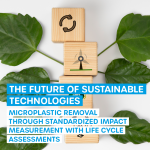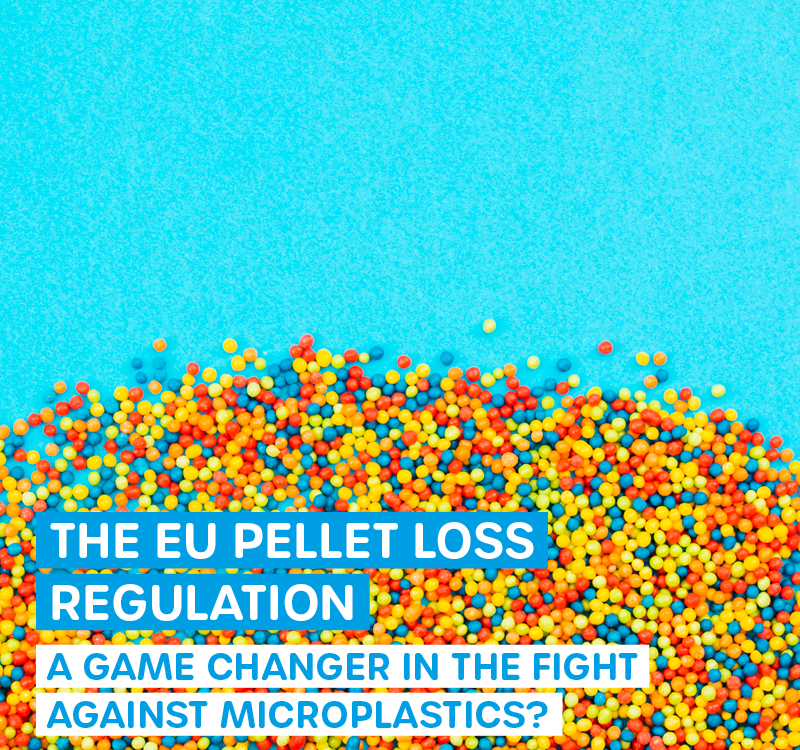
Microplastics from artificial turf versus hybrid turf
15. August 2025
Microplastic Removal and LCA
19. August 2025Cities, Counties, Rivers: From Source to Mouth, From City to Countryside – Microplastics Know No Boundaries
Do you remember the game “Name, Place, Animal, Thing”? Back then we searched for terms in categories – today we search for solutions to a problem that penetrates all categories: microplastics in our waters. What begins in cities flows through the countryside into our rivers. What is still invisible today will have visible consequences tomorrow. But we can act – and you can become part of the solution.
Microplastics: The Invisible Threat Right at Our Doorstep
Microplastics, which are contained in, for example, cosmetic products, or are released from synthetic fiber clothing when washing, cannot be completely removed from water in wastewater treatment plants and thus reaches our rivers, lakes and oceans. The numbers are alarming: In German rivers, concentrations of 10 to 100 particles per liter can be found, while in municipal wastewater systems there can be up to 1000 particles per liter. The Heinrich Böll Foundation's Water Atlas 2025 provides data on the alarming consequences of the state of our waters. According to the report, only 13% of German rivers are in good ecological condition and 39% are in moderately good condition.
Scientific studies confirm the extent of contamination: A comprehensive study in the catchment area of the Rhine and Danube found that not a single sampled river was uncontaminated. Particularly concerning: The researchers found the lowest concentration in the Rhine just south of Mainz with 2.9 particles per cubic meter of water, while higher concentrations were measured in smaller tributaries.
Our "TRACKING DOWN MICROPLASTICS TOGETHER" campaign confirms these results. The Alb was the first complete river to be sampled and analyzed for microplastics in a short time. The sobering result: Microplastics were found in all water samples from the Alb. With the known variances, depending on the location of the sampling site, we found an average of 99 particles/liter.
The Problem of Wastewater Treatment Plants: Hotspots of Microplastic Distribution
So far, most wastewater treatment plants in Germany cannot filter microplastics or micropollutants such as pharmaceutical residues from wastewater in sufficient quantities. Current research estimates that each treatment plant transports between 93 million and 8.2 billion plastic particles into rivers and seas annually.
Wastewater treatment plants cannot completely retain microplastics from wastewater using conventional methods, this was demonstrated not only in our studies, but also confirmed by a pilot study by the Alfred Wegener Institute. The problem intensifies during extreme weather events: During heavy rain, part of the mixed wastewater is discharged largely untreated into surface waters.
EU Urban Wastewater Treatment Directive: The Turning Point for Clean Water
The new EU Urban Wastewater Treatment Directive (UWWTD) brings decisive changes: According to UWWTD, only by 2045 must all treatment plants with more than 150,000 population equivalents have a fourth treatment stage. The legal regulation to involve pharmaceutical and cosmetics manufacturers in the costs of an additional fourth treatment stage in wastewater treatment plants follows the simple principle that those who cause water pollution should also contribute financially to its elimination.
Why Your Engagement is Crucial Now
- For Citizens:
The problem doesn't just lie in distant oceans – it begins right at our doorstep. The microplastics problem lurks directly in our local waters. With our Analytics Kit, everyone can actively contribute to data collection and examine local water bodies for microplastics.
- For Cities and Municipalities:
The data situation is clear – the highest concentrations are found in municipal systems. It's not about assigning blame but about making good societal decisions. This can start with planning the fourth treatment stage for municipal wastewater treatment plants. Investments in microplastic monitoring today are investments in the health of the citizens tomorrow.
- For Schools and Educational Institutions:
With TRACKING DOWN MICROPLASTICS TOGETHER, a special project series started in March 2025. With the help of students, multipliers and interested parties, we sample selected rivers from mouth to source for microplastics. Bring research into the classroom and make your students Citizen Scientists!
The Global Map of Microplastics: Transparency Creates Pressure for Action
In the Global Map of Microplastics, we connect different worlds, include all stakeholders, analyze microplastics in different waters, and work on solutions for water without microplastics. This interactive map makes the invisible visible and creates the data basis for targeted action.
More than 7,000 data points have already been entered into the Global Map – but we need more! We use the Global Map of Microplastics to address stakeholders by communicating microplastic pollution and simultaneously working on solutions for water without microplastics.
Three Ways You Can Act Now
1. Donate for More Data Points
Every donated euro flows 100% into education and research. Support the expansion of monitoring to additional water bodies and help identify hotspots.
2. Become a Citizen Scientist with the Analytics Kit
Everybody has the opportunity to become an active part of the solution for water without microplastics. Order your own Analytics Kit and sample your local water body according to scientific standards.
- For schools and non-profit organizations: €225 (thanks to funding)
- For all interested parties: €350
3. Municipalities: Invest in Regional Monitoring
Provide financial resources for the systematic sampling of your water bodies. The identified hotspots provide the crucial starting point. Together with relevant stakeholders, targeted measures that show local impact should be developed next.
From Data to Action: The Path to Solutions
The three-pillar principle of Wasser 3.0 shows the way:
- ACT: Through precise data collection, we create the foundation for evidence-based decisions
- PREVENT: Identification of entry sources enables preventive measures
- REMOVE: Our innovative Wasser 3.0 PE-X® Technology for microplasticremoval offers concrete solutions
Your Impact Counts
Students help take water samples from their regional water body and send them to the laboratory. The results are displayed in the Global Map of Microplastics and provide the basis for activating further steps toward politics, science, business, and society.
Imagine:
- Your community becomes the first microplastics-free municipality
- Your river becomes a lighthouse project for clean waters
- Your school contributes decisively to the scientific database
The Call to Action
Cities, Counties, Rivers – the game is over. Now it's about reality. Microplastics know no boundaries and neither does our commitment to clean water.
The time of guessing is over – the time of measuring has come. The time of hesitation is over – the time of action is now.
Become Part of the Solution:
- Donate for more transparency
- Order your Analytics Kit
- Bring the topic to your municipality
- Turn data into concrete action
Because only together can we achieve what is urgently needed: Water without microplastics. For all of us. For future generations.
And by the way: We are a non-profit GreenTech company from Karlsruhe and official partner of the EU Mission "Restore our Ocean and Waters by 2030".






